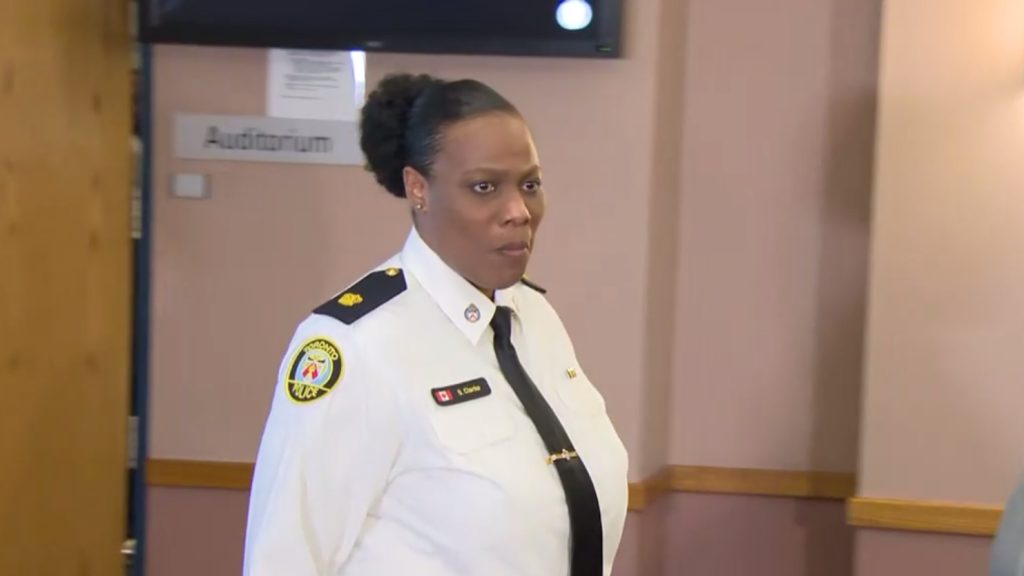Nation-Building, Not Politics, Behind Week-Long Arctic Tour: Harper
Posted August 28, 2010 10:41 am.
This article is more than 5 years old.
He stood astride an ice floe, F-18 jets roaring overhead for a perfect photograph, reannounced feel-good government initiatives and gave a rousing speech to party faithful warning of the evils of an opposition coalition.
But Prime Minister Stephen Harper said Friday that his annual northern tour wasn’t about political gain.
Closing out the tour in Whitehorse, he said his five days of appearances and announcements won’t win elections in a vast region that holds only three parliamentary seats.
“We’re not going to win or lose an election in the North,” Harper said after his final speech of the tour.
“We’re doing it because this is about nation-building, this is the frontier, this is the place that defines our country.”
Harper’s tour followed the release of the government’s Arctic foreign policy, a document that laid out four pillars of the Conservatives’ approach to the North but gave few specifics about how they will move toward those goals.
That’s why, academics say, his annual trips aren’t enough.
“Let’s wake up as a northern country and accept that we cannot possibly be hurt by the establishment of a clear polar policy,” said John England, the Northern Research Chair at the University of Alberta.
England said Canada needs an enshrined and legislated approach that commits departments and their resources to clear goals in the North.
“Without a policy, then every government, every assistant deputy minister, can set their own direction and meanwhile the long-term government plan is left wide open.”
Military historian Whitney Lackenbauer said Harper appears at least to be moving past the old “use it or lose it” approach to the North.
“We for years saw the military side of it as almost becoming synonymous with sovereignty,” Lackenbauer said.
“It’s about capacity building in the North as well, the investment in communities being front and centre.”
Opposition critics have lambasted Harper for staging a lavish photo-op this week, complete with scuba divers, icebreakers and aircraft during an annual northern military exercise.
But Harper defended his stop at Operation Nanook as a way to draw positive attention to the work of the military.
“It’s unfortunate when we highlight the great work that the military is doing that people criticize that,” he said.
Lackenbauer, who just returned from two weeks embedded as part of Operation Nanook, said there’s no mistaking part of Harper’s trip was about optics.
“It’s of course about optics, it’s of course about image,” Lackenbauer said in an interview.
“But I think it’s a reminder and a reaffirmation for northerners that he’s interested — and that’s key.”
Lackenbauer said that while Harper’s photo shoot with the military makes for pretty pictures, it was actually his announcement of the new High Arctic Research Station that might mean more in terms of advancing the government’s sovereignty strategy in the North.
“This is what allows us, as much as anything, to be a player internationally,” said Lackenbauer.
“It’s the science that helps inform our position on the Arctic Council. It’s our science that allows us to get a sense of what dynamics are at play in the North.”
While Harper’s announcements over the course of the week focused on military sovereignty, environmental protection, social spending and foreign policy, there was one beluga in the room he refused to address: climate change.
All eyes internationally are now on the north, Harper repeatedly stressed. Yet he neglected to mention that one of the key reasons for that increased attention is the easier access afforded by a warming climate.
During his visit, a massive chunk of ice broke off Ellsemere Island in Nunavut — a 5,000-year-old peninsula of ice so large that it’s disappearance will cause a redrawing of Canada’s map, according to federal officials.
The event went unremarked upon by the prime minister, even as he reannounced federal funding for Radarsat satellite technology that’s key to mapping Canada’s Arctic.
If climate change proved too hot to handle for the travelling prime minister, he did show a decidedly warm face to his northern hosts.
As his star turn as part of an Inuit community dance and his spin on an all-terrain vehicle showed, Harper is genuinely at ease in the North — and not afraid to have a little fun on the job now and then.
“Even my mother approves,” he said.










